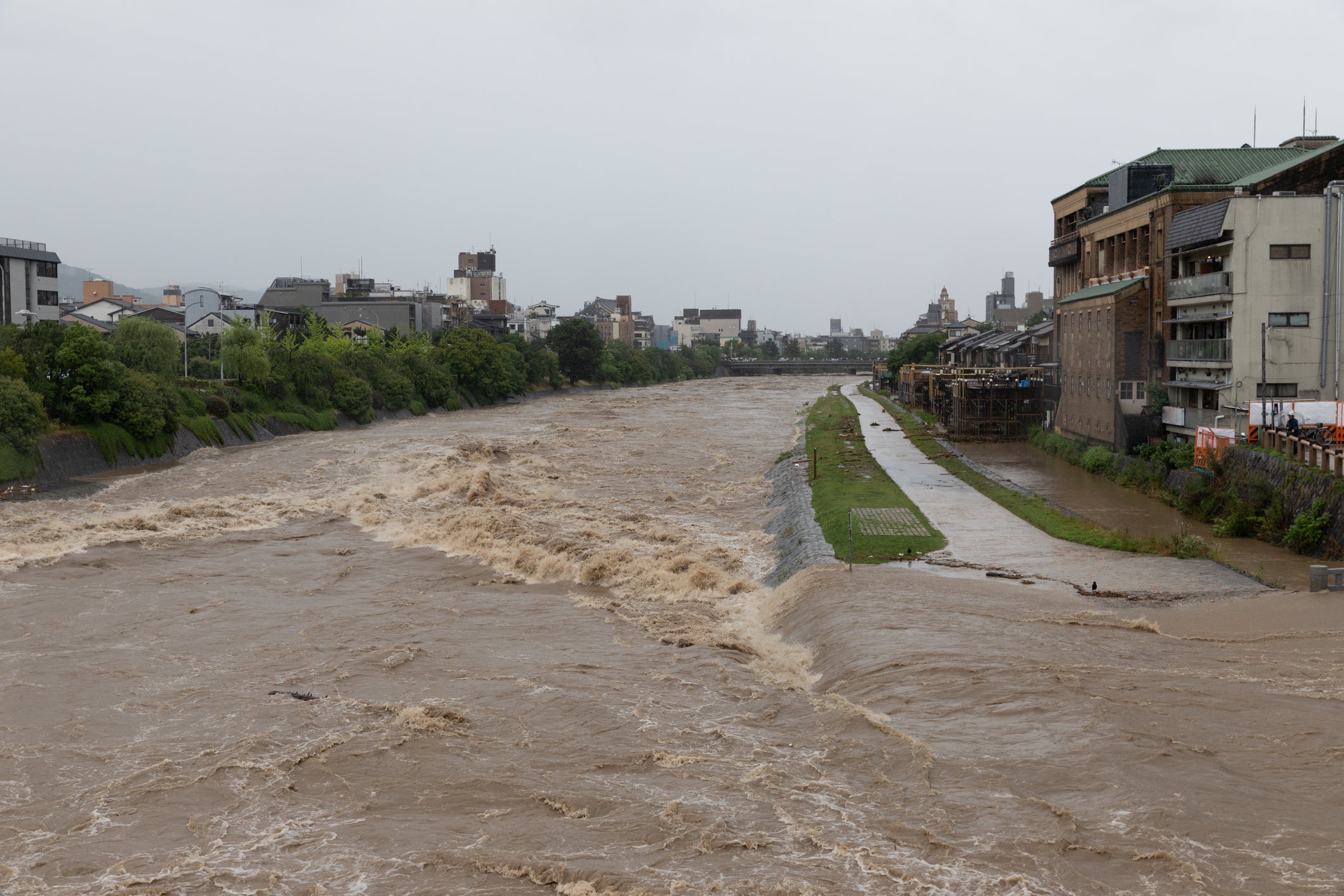Forest fire prevention and countermeasures
table of contents
Introduction
1. Natural factors
2.Human factors
3. Preventive measures
4.Measures in case of fire
summary
Introduction
Forest fires are natural disasters that can cause many environmental problems, including loss of biodiversity and air pollution. Forest fires are more likely to occur, especially in dry seasons and in areas affected by climate change. For this reason, forest fire prevention and countermeasures have become important issues in order to protect the safety of our natural environment and society. Below, we will explain in detail forest fire prevention and countermeasures.
1. Natural factors
1-1 Fire caused by lightning (lightning fire)
Lightning is caused by a discharge of lightning. When lightning strikes trees and plants in a forest, high-temperature currents are transmitted, which can cause fires in dry plants and fallen leaves that are easily flammable. The risk of lightning fires increases, especially in dry seasons and areas with frequent thunderstorms.
1-2 Fire caused by earthquake
Earthquakes are caused by the movement of the Earth's crust, and their effects can cause downed trees and power lines. In these situations, sparks can fly off and ignite surrounding dry vegetation, causing a fire.
1-3 Fires caused by volcanic activity
Volcanic eruptions can cause heat and lava to contact surrounding vegetation, causing fires. Volcanic eruptions can also cause fires by covering forests with volcanic ash and lava.
1-4 Fire caused by sunlight
Sunlight can produce concentrated heat on dry plants and fallen leaves. Concentrated sunlight creates a lensing effect that can cause a fire. Sunlight increases the risk of fires, especially in dry climates and during the summer months.
2.Human factors
2-1 Arson (houka)
Arson refers to fires caused by the intentional use of fire. Arson can be caused by malicious acts, playing with fire, or criminal activity. Arson not only destroys forests and grasslands, but can also cause serious damage to surrounding homes and facilities.
2-2 Bonfire or campfire
Improperly lit bonfires or campfires in forests can cause fires. If you are inexperienced with fire handling or do not manage the fire properly, sparks may fly and ignite surrounding flammable materials.
2-3 Farmland and forestry activities
Activities such as slash-and-burn farming and logging in forestry can cause fires. Fires can occur when fires are handled carelessly or are difficult to control.
2-4 Improper disposal of garbage
Improperly disposed of trash or trash dumped in the open can become a source of fire ignition. Glass bottles, plastic bags, paper scraps, etc. can generate concentrated heat from sunlight and heat, which can ignite surrounding combustible materials.
2-5 Malfunction of electrical equipment
Fires may occur due to improper handling or malfunction of electrical equipment. Especially when power lines run through forested areas, malfunctions can cause fires.
3. Preventive measures
3-1 Strengthening surveillance and early warning systems
①Monitoring system using solar panels
Solar panel-based monitoring systems are used to constantly monitor forests in remote areas. Solar panels that convert sunlight into electricity work together with cameras and sensors to detect and monitor forest fires. This allows you to quickly identify fire outbreaks that are easy to miss with the human eye.
②Monitoring using satellite technology
Satellite technology helps in effectively monitoring large areas of forests. By using high-resolution satellite images, it is possible to detect changes and abnormalities in forests. It is an effective means of monitoring, especially in undeveloped and depopulated areas that are difficult for people to access.
③Fire prediction using weather sensors
Weather sensors are used to assess the risk of fire due to changing weather conditions. Monitor weather information such as temperature, humidity, and wind speed in real time to predict how conditions such as dry weather and strong winds will affect fire outbreaks. This allows you to understand where and when the risk of fire increases and take countermeasures.
④ Utilization of artificial intelligence ( AI ) and data analysis
Surveillance systems combine artificial intelligence and data analysis technology to enable more advanced fire detection. AI more accurately detects real fires by eliminating factors that could be mistaken for fires (e.g. sunlight reflections or fog). Data analysis also allows us to understand patterns and trends in fire occurrence and predict future fires.
⑤Improvement of alarm system
If the monitoring system detects a fire, a system must be in place to quickly issue an alarm. The alarm system serves to notify local residents and related organizations of the occurrence of a fire. The operation of an effective warning system allows for rapid evacuation and firefighting preparations, thereby minimizing damage.
3-2 Education and awareness activities
①Holding workshops and seminars
We hold workshops and seminars in cooperation with local schools, local organizations, and local governments. We will invite experts and local firefighters as lecturers to provide basic knowledge about forest fires and information on preventive measures. Through on-site experience and simulated fire drills, participants will be able to experience the dangers of fire and understand the importance of fire prevention measures.
②Distribution of pamphlets and posters
For the purpose of disseminating information, pamphlets and posters regarding forest fires will be produced and distributed and displayed at local public facilities, schools, tourist facilities, etc. By using easy-to-understand illustrations and charts to visually communicate the causes of fires, preventive measures, evacuation methods, etc., it is possible to effectively disseminate information to a wide range of age groups.
③Implementation of events and campaigns
Leverage special local days and events to run campaigns about forest fires. For example, we use Forest Day and environmental events to set up booths and exhibits to raise fire prevention awareness and conduct educational activities for visitors. By using regional symbols and local characters, you can easily attract interest.
④Incorporation into school education
Incorporating the theme of forest fires into school education can increase children's fire prevention awareness. By incorporating the causes of fires, preventive measures, and responses during disasters into teaching materials during classes and general study time, you can help children understand the importance of fire prevention while learning.
⑤ Information dissemination using media
We will disseminate information about forest fires widely using media such as television, radio, and websites. By communicating information about fire risks and fire prevention measures through news programs and public relations programs, information will reach more people.
3-3 Appropriate management and maintenance
①Regular forest inspection
Regular inspections by forest managers and experts are required. We reduce the risk of fire by understanding the health status of trees and plants in a forest, and by identifying and removing dead or diseased trees at an early stage. It is important to conduct inspections according to the season and weather conditions to understand changes in the forest and take appropriate measures.
②Removal and pruning of dead trees
Dead trees should be removed regularly as they are likely to become a source of fire. It is also important to improve ventilation within the forest through pruning, as trees with dense branches and leaves can promote the rapid spread of fire. This will make extinguishing operations more effective in the event of a fire.
③ Appropriate implementation of deforestation
Deforestation is an important way to thin out overcrowded trees and promote healthy forest growth. Appropriate logging can eliminate conflicts and overcrowding within the forest and maintain a healthy forest ecosystem. It is important that logging operations carefully assess the impact on the local environment and follow sustainable forestry principles.
④ Installation of firebreaks
Setting up firebreaks around forests can be expected to have the effect of preventing the spread of fires. A firebreak serves as a barrier to prevent a fire from spreading even if a fire approaches, by removing flammable materials such as grass, fallen leaves, and dead trees, and creating a certain distance from surrounding land and buildings.
⑤Ecosystem protection and restoration
It is also important to protect and maintain the balance of forest ecosystems. If the ecosystem is healthy, the natural fire cycle within the forest can cause the fire to die out on its own. It is also necessary to take appropriate protective measures to facilitate post-fire ecosystem recovery.
⑥ Cooperation with local residents
Strengthening cooperation with local residents is also important for proper management and conservation. Regular information sharing and communication are essential for local residents to understand the health of their forests and raise their awareness of fire risks.
4.Measures in case of fire
4-1 Fire suppression and firefighting activities
When a fire breaks out, a quick response is required. Fire suppression teams and professional firefighters will be dispatched to carry out appropriate fire extinguishing operations. They use water and extinguishing agents to control flames in specific areas and prevent the fire from spreading. We also use helicopters and aircraft to respond to fires in difficult locations and over large areas. This will slow the progress of the fire and minimize further damage.
4-2 Evacuation plan and evacuation drill
If there is a risk of a fire spreading, create an evacuation plan for local residents and conduct evacuation drills regularly. An evacuation plan clearly indicates evacuation routes and evacuation locations so that residents can quickly move to a safe location. Evacuation drills help residents learn appropriate behavior in the event of a fire and minimize disruption. It is important that proper guidance and training ensure that fire evacuations occur quickly and effectively.
4-3 Disaster recovery and ecosystem restoration
When fire damage occurs, it is necessary to formulate an appropriate disaster recovery plan and work to restore the ecosystem of the burned forest. Disaster recovery plans include assessments of burned areas, reforestation plans, and soil conservation measures. To restore ecosystems in burnt areas, we will use measures such as reintroducing appropriate plants and organisms and promoting natural recovery. Ecosystem recovery is a long-term process, but prompt action and continued efforts will contribute to sustainable ecosystem restoration.
summary
Forest fires are one of the most destructive natural disasters, and have a serious impact on the environment and society. Prevention and countermeasures are essential, and important measures include strengthening monitoring systems, education and awareness activities, and appropriate forest management. In the event of a fire, prompt firefighting and evacuation plans are required. Furthermore, international cooperation and joint response are also important elements of forest fire prevention. In order to protect the earth's precious resources, forests, and build a sustainable future, it is necessary to take measures to prevent forest fires.








